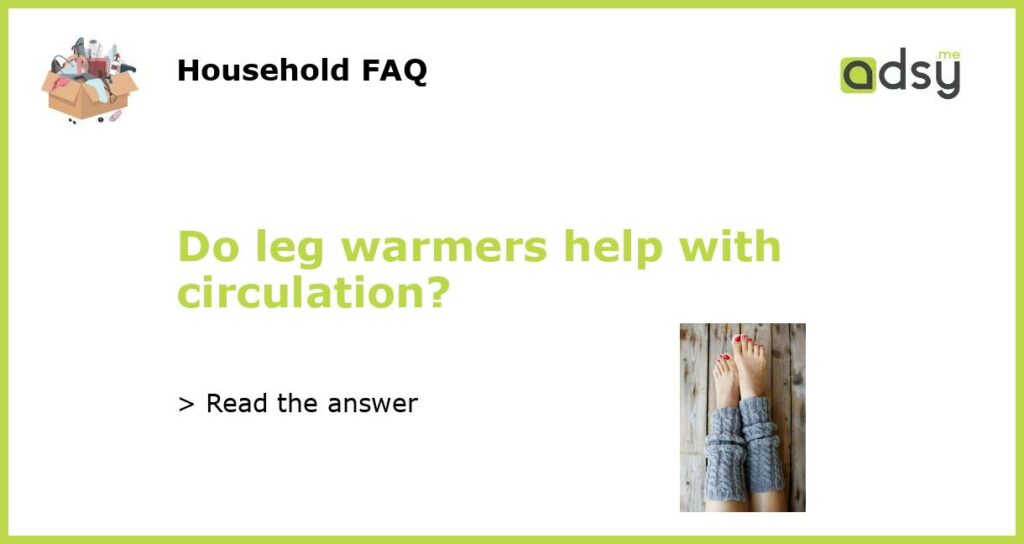What are leg warmers?
Leg warmers are garments that are worn around the lower legs to keep them warm during cold weather. They are usually made from wool, cotton, or synthetic materials. Leg warmers were popularized in the 1980s by dancers, but they have since become a fashion accessory for people of all ages.
Do leg warmers help with circulation?
While leg warmers are primarily worn for warmth, they can also have some benefits for circulation. The compression from the leg warmers can help improve blood flow to the legs and feet, which can be beneficial for people who spend a lot of time sitting or standing. Additionally, leg warmers can help reduce muscle soreness and stiffness after exercise, which can also improve circulation.
What are the benefits of improved circulation?
Improved circulation can have a number of benefits for your overall health. It can reduce your risk of developing blood clots, which can lead to serious health problems like deep vein thrombosis and pulmonary embolisms. It can also help bring vital nutrients and oxygen to your cells, which can improve your energy levels and overall well-being.
How can you improve circulation in your legs?
In addition to wearing leg warmers, there are several other things you can do to improve circulation in your legs. Exercise is one of the most effective ways to improve circulation, as it helps strengthen the muscles and arteries in your legs. Eating a healthy diet, staying hydrated, and avoiding prolonged periods of sitting or standing can also help improve circulation.
When should you wear leg warmers?
Leg warmers are generally worn during cold weather to provide additional warmth and insulation for the legs. However, they can also be worn during exercise to help improve circulation and reduce muscle soreness. If you spend a lot of time sitting or standing throughout the day, you may also benefit from wearing leg warmers to promote better blood flow to your legs and feet.






